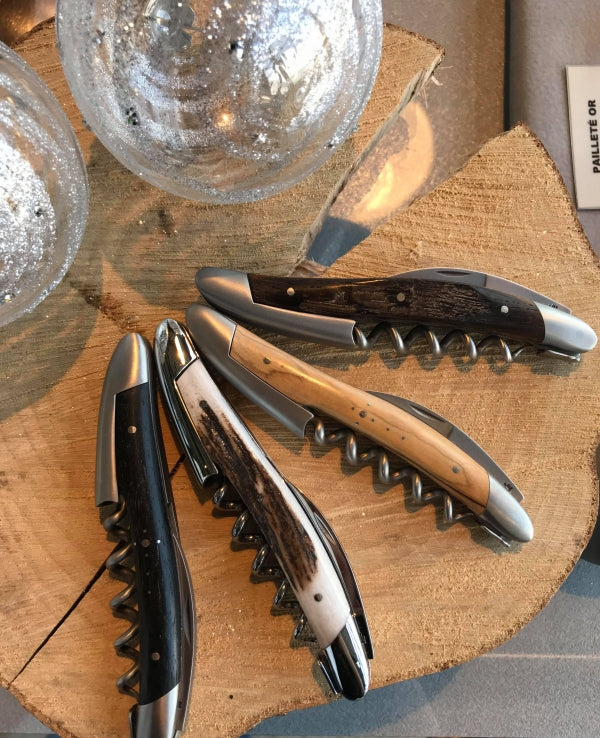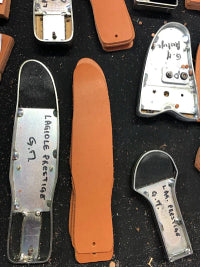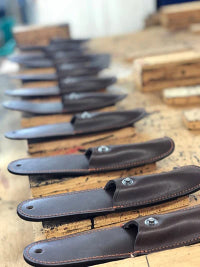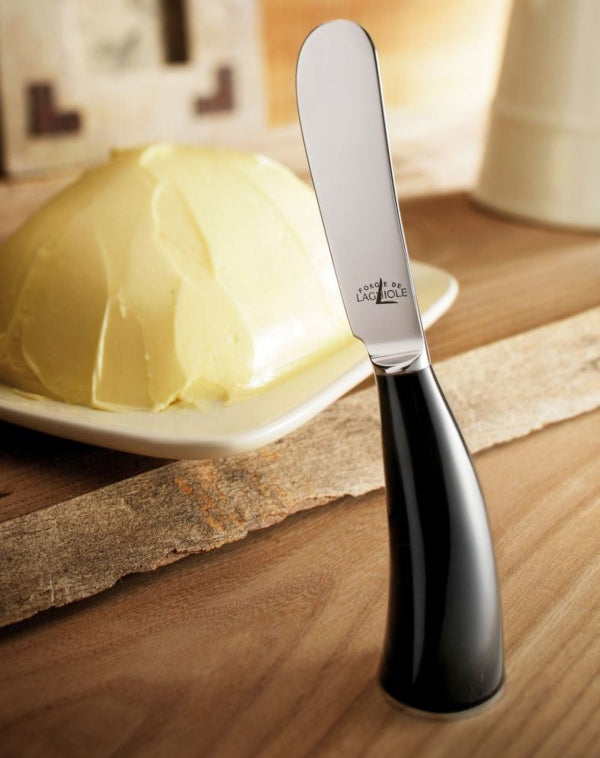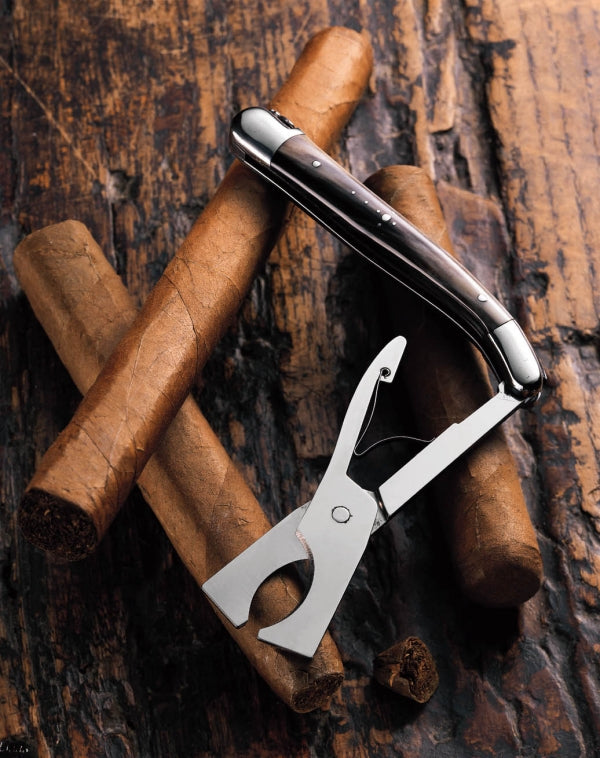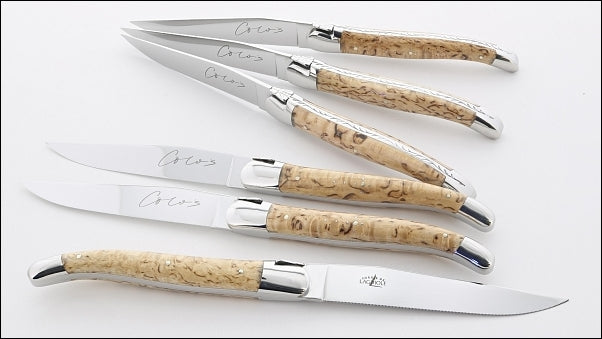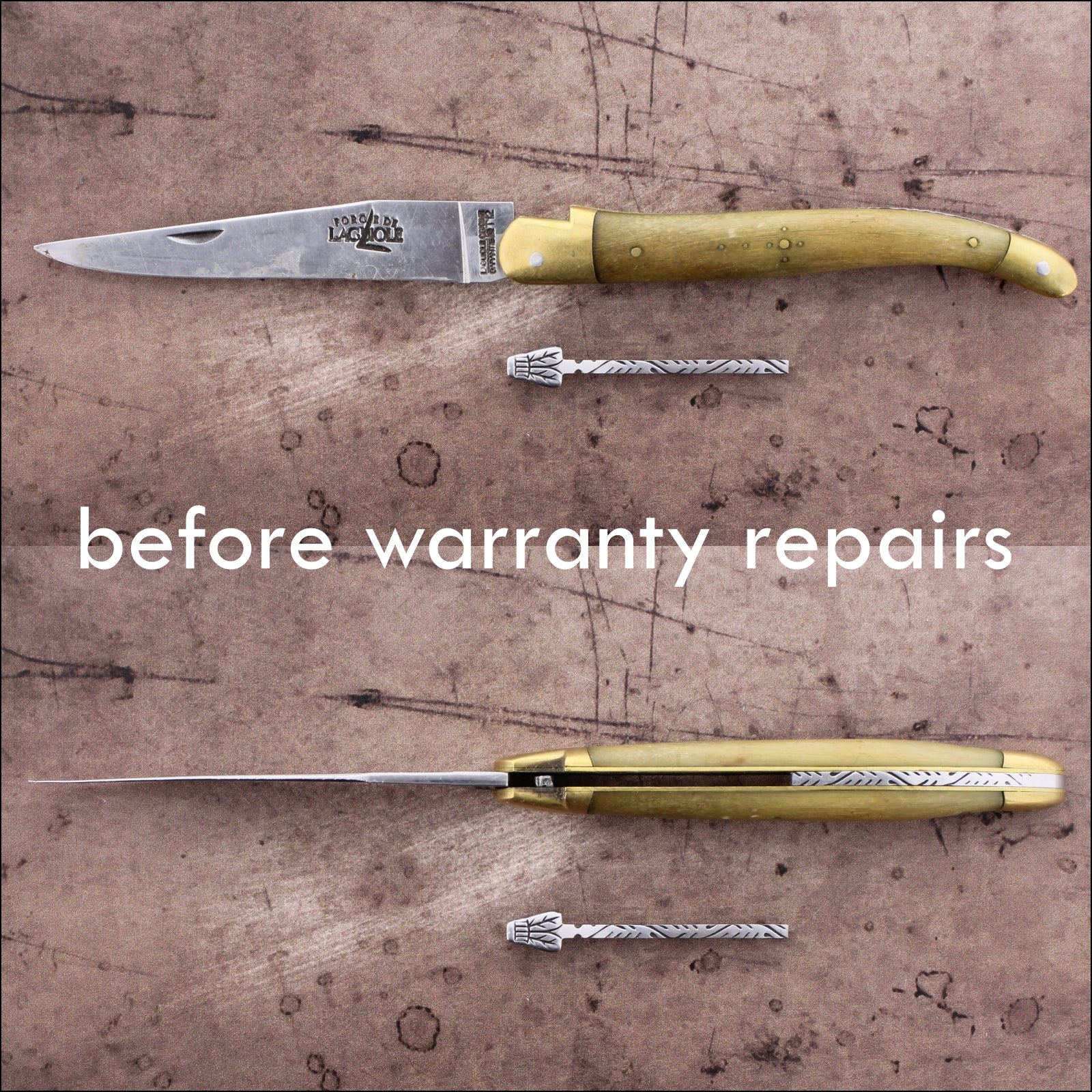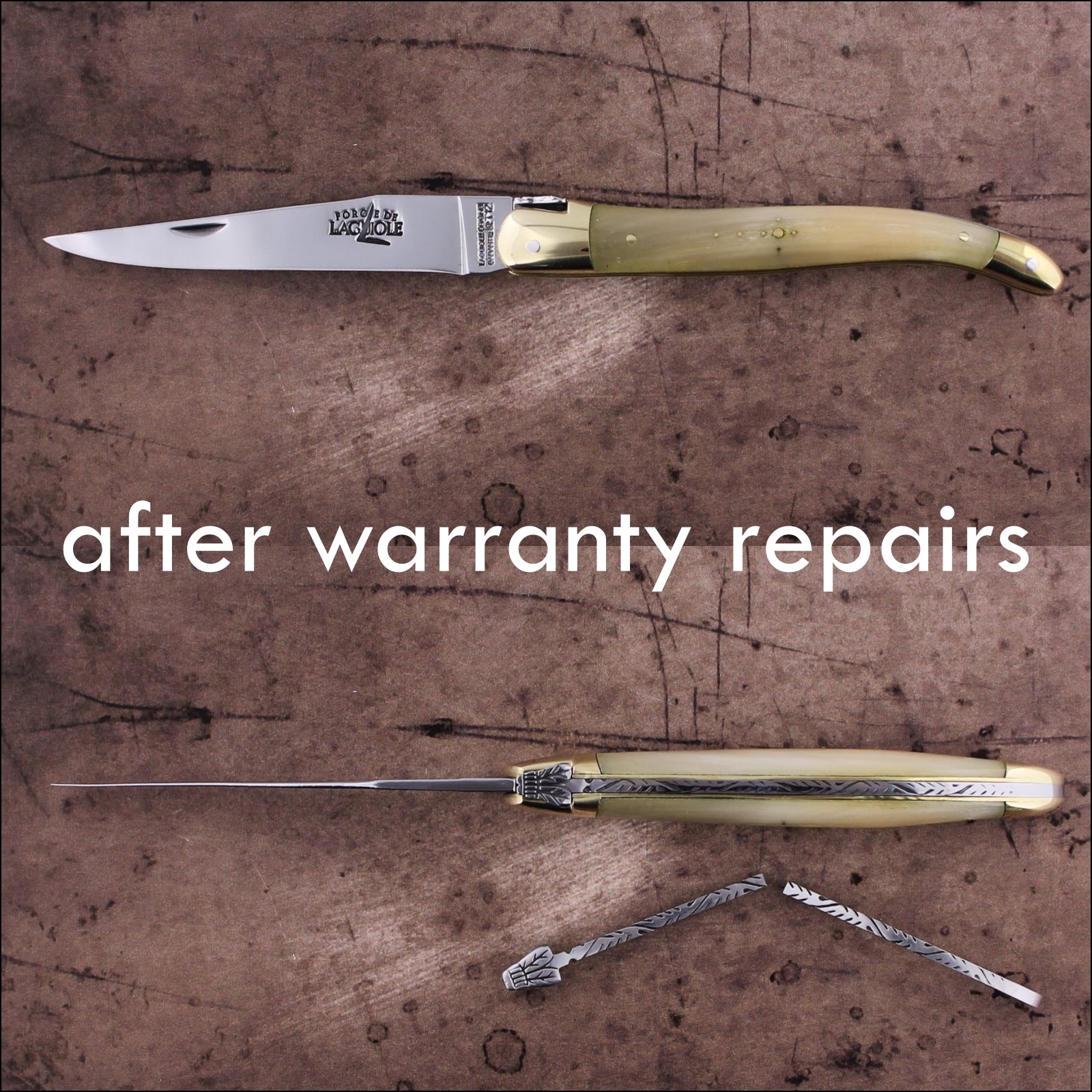Pierre-Jean Calmels, a blacksmith in the village of Laguiole, conceived the first Laguiole knife in 1829. Calmels built two models, the capuchadou, knife of the ordinary peasants of the Aubrac and the Spanish Navaja, brought back from Catalogne by seasonal workers. The hardest steel tempered in Laguiole purest natural spring, a spring to close the blade, a handle fashioned from the local Aubrac Oax's horn... an exceptional knife was born. Over the years, Pierre Jean Calmels perfected his art by adding a Trocar in 1840 to meet the needs of herders and farmers.

